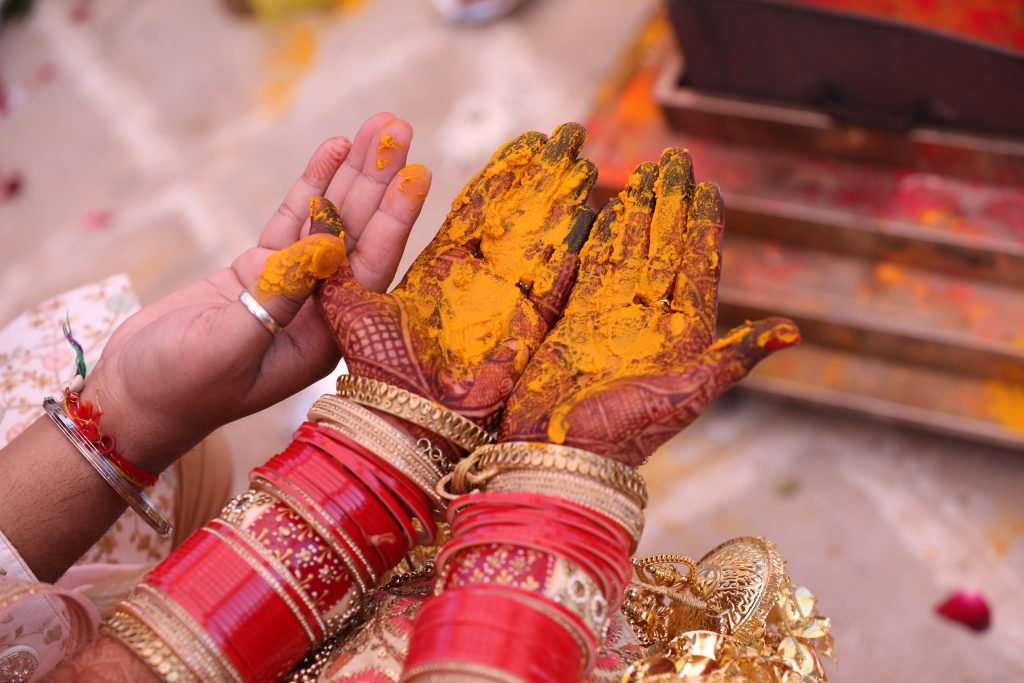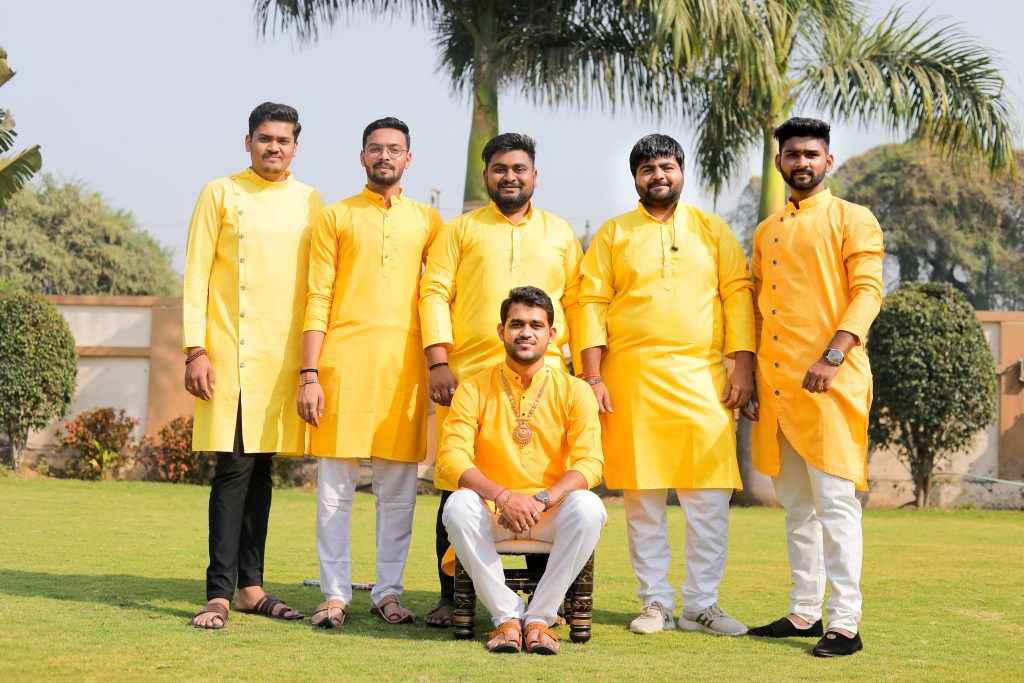The Haldi ceremony is a ritual holy bath also known as pithi ceremony, which is one of the pre-wedding ceremonies in India. Turmeric (haldi), oil and water are applied to both the bride and groom by married women on the morning of the wedding. The mixture is believed to bless the couple before the wedding.
A traditional haldi ceremony is very important in Hindu weddings. For many Indian brides, the vibrant traditional haldi ceremony is the first step to a happy married life. A traditional haldi ceremony is meant to bless the bride and groom, cleanse them of Buri Nazar, and prepare them for married life.

In modern era, haldi is more than a ritual. It is a treasure trove of memories created by smearing haldi paste on the bride and groom. The traditional haldi ceremony is the most exciting and beautiful pre-wedding ritual.

Tradition dictates that only family, friends, and close relations can smear the haldi paste on the bride and groom and bless them. A traditional haldi ceremony is also the last leg of the bride and groom’s singlehood and the last hoorah with their different families before their lives are eternally interwoven. So it’s only fair that you plan yours perfectly.
The traditional haldi celebration is a mix of rituals and merriment. To make the traditional haldi ceremony a fashionable affair with a massive photo-op, millennials added stunning extras. Traditions must not be forgotten in all of this.

The original haldi rites are simple. In most cases, a paste of turmeric mixed with sandalwood powder, milk, rose water, rose petals, and curd is applied on the bride’s or groom’s hands and feet.

Ask your family elders to organise all rites. It will not only ensure that these protocols are carefully followed but also reduce the amount of things you need to perform for your traditional haldi ceremony.

It is also advised that you plan the conventional aspect of the ceremony first, giving plenty of time for the entertaining activities that will follow.




